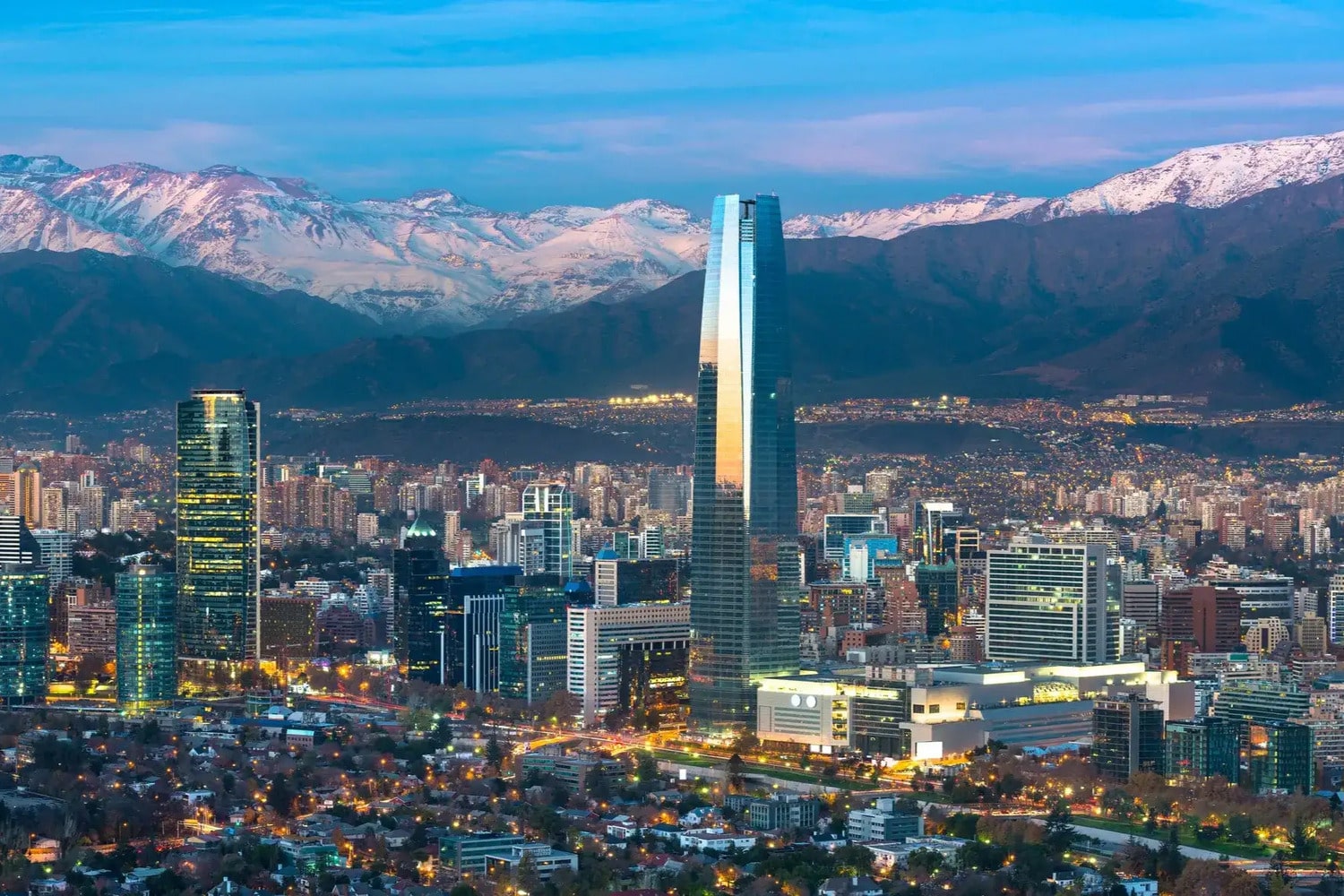Chile is one of the most fascinating countries in South America, stretching like a narrow ribbon between the Pacific Ocean and the majestic Andes Mountains. Its length exceeds 4,300 kilometers, making it one of the longest countries in the world. Within its borders, you can find an astonishing diversity of landscapes — from the driest desert on Earth to the icy glaciers of Patagonia. Chile’s culture blends indigenous traditions, Spanish heritage, and the vibrant spirit of modern Latin America. Below are some captivating and educational facts about this remarkable country that you might not know.
- Chile has one of the longest and narrowest shapes of any country in the world. Its length stretches over 4,300 kilometers, while its average width is only about 180 kilometers. Because of this, almost every climate zone on Earth can be found within its territory — from arctic cold in the south to tropical warmth in the north.
- In the north of Chile lies the Atacama Desert, considered the driest place on Earth. Some parts of it have not seen rainfall for over 400 years. The region is often used to test space exploration equipment because its conditions resemble those on Mars.
- Chile is home to more than 1,300 volcanoes, about 90 of which are still active. Among the most famous are Villarrica, Llaima, and Osorno, which attract many visitors each year despite their potential danger.
- The country is one of the world’s leading producers of copper. The Chuquicamata mine, located in northern Chile, is the largest open-pit copper mine on the planet, reaching over a kilometer deep. The mining industry is a vital part of Chile’s economy.
- The capital city, Santiago, lies at the foot of the Andes Mountains and is considered one of the most picturesque metropolises in the world. From the city, one can see both modern skyscrapers and snow-capped peaks in the distance.
- Easter Island, famous for its giant stone statues known as moai, is part of Chile. These mysterious sculptures were created centuries ago by the Rapa Nui people, and their purpose and methods of transportation remain subjects of scientific debate.
- The world’s southernmost inhabited settlement, Puerto Williams, is located in Chile. This small town in the Magallanes region is often referred to as the gateway to Antarctica. Its residents live in a challenging climate but are proud of their unique location.
- Chile has more than 6,000 kilometers of coastline rich in marine life. The Chilean diet is full of seafood, including fish, shellfish, and sea urchins, which are considered a delicacy.
- The country is one of the best places on Earth for stargazing. Thanks to its clear skies, dry climate, and minimal light pollution, Chile is home to some of the most advanced astronomical observatories in the world.
- Central Chile is famous for its vineyards, which produce some of the finest wines in the world. The Carmenere and Cabernet Sauvignon grape varieties are national treasures and major export products.
- Chile’s flora and fauna are unique and diverse. Animals such as guanacos, pumas, Andean condors, and the rare huemul deer inhabit its varied landscapes. Many species are found nowhere else on the planet.
- Chilean culture combines elements of indigenous traditions, Spanish influence, and modern Latin American creativity. The national dance, cueca, symbolizes the country’s spirit and unity and is performed during festivals and celebrations.
- Patagonia, located in southern Chile, is one of the most breathtaking regions on Earth. Its glaciers, lakes, and mountains attract adventurers and nature lovers from all over the world. Torres del Paine National Park is often ranked among the most beautiful natural reserves in existence.
- Chile lies in a seismically active zone, making earthquakes a regular part of life. One of the most powerful earthquakes ever recorded occurred in 1960 in the city of Valdivia, with a magnitude of 9.5.
- Education in Chile is of high quality, and the literacy rate exceeds 96 percent. The country invests heavily in science and technology, with a strong focus on environmental protection and space research.
- Chile is one of the most developed nations in Latin America. Its stable economy, democratic governance, and social programs have contributed to a high standard of living and strong human development.
- Nearly 20 percent of Chile’s territory consists of national parks and nature reserves. These protected areas preserve unique ecosystems ranging from deserts and wetlands to forests and glaciers.
- Chileans are known for their hospitality and love of celebration. Every year on September 18, the country celebrates its Independence Day with parades, traditional music, dancing, and family gatherings.
- Chilean cuisine is diverse and blends local ingredients with Spanish influences. Popular dishes include empanadas, cazuela, pastel de choclo, and asado, all rich in flavor and tradition.
- Chile is home to one of the most famous literary museums in the world — the house of Pablo Neruda. The Nobel Prize-winning poet left behind a collection of poetry and a home that has become a cultural landmark.
- The country’s climate is remarkably varied. While the north experiences extreme heat and aridity, the south is known for cold temperatures and frequent rain. This diversity allows Chile to produce a wide range of agricultural products.
- Chile has developed one of the most effective disaster-response systems in the world. After devastating earthquakes and tsunamis, the government implemented advanced warning and evacuation methods that save thousands of lives.
- In southern Chile lies a natural wonder known as the Marble Caves, located on General Carrera Lake. The caves’ blue and white walls reflect sunlight beautifully, creating an otherworldly play of colors, especially at sunrise.
Chile is a land of contrasts where nature, history, and modern life exist in perfect harmony. Interesting facts about this country show how unique its people, culture, and landscapes truly are. From the Atacama Desert to the glaciers of Patagonia, Chile continues to inspire awe with its beauty, diversity, and enduring spirit.





